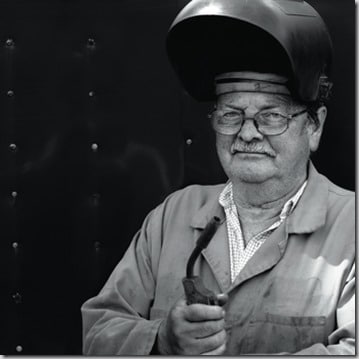Ageing workforce
Guest Post By the late George Robotham
 I am 58 and have worked in OHS for 38 years. I have had a variety of OHS roles and have a rich portfolio of OHS experience to fall back on. I am no expert and still have a lot to learn in the field, fortunately I am a lifelong learner and I will continue to learn. My opinion is that mentally I am at my peak in relation to OHS.
I am 58 and have worked in OHS for 38 years. I have had a variety of OHS roles and have a rich portfolio of OHS experience to fall back on. I am no expert and still have a lot to learn in the field, fortunately I am a lifelong learner and I will continue to learn. My opinion is that mentally I am at my peak in relation to OHS.
Unfortunately the body has turned to crap. Many years of putting my head into the front row of rugby union scrums has not done my neck much good and my knees are not what they used to be.
Over the next four decades in Australia, the number of people aged over 65 will almost double. Within just seven years, about 85 percent of labour market growth will come from people over the age of 45.Our ageing population is a reality. Economic wellbeing, for both governments and individual businesses, depends on keeping older workers employed. Companies that fail to address the ageing workforce issue risk future staff and skill shortages, and any competitive edge they now enjoy (Qld. government, Dept. Of Justice)
Studies have produced overwhelmingly positive feedback of mature age employees in the workforce. Mature age employees are capable of adapting to change and learning new skills. They bring a calming influence, can utilise their experience and knowledge and can mentor younger employees.
The needs of older workers are no different to the needs of young workers – they need a safe work environment and safe systems of work. They need an appropriate level of training to be able to perform their work safely and be made aware of the risks associated with the work. They also need policies that reflect organisational commitment to health and safety and procedures. Interestingly the definition of an older worker seems to be over 45.
There are four key elements in managing an ageing workforce-
- Proactively addressing age discrimination and age stereotyping in recruitment and selection, training and employer and employee attitudes to workforce participation.
- Using an integrated approach to recruitment, workforce planning, career and succession planning, job design, training and development and knowledge management to better develop and transfer critical organisational skills and knowledge.
- Creating a work environment where older employees are able to make informed choices about their workforce participation and are encouraged to use flexible work practices to develop individual approaches to continued participation and or flexible retirement from the workforce.
- Using skill and career development activities, good job design, raised awareness about health and well being, work and life balance and safety factors to encourage and support older workers to retain their employability.
The above is adapted from A Guide For The Qld. Public Service-Managing An Ageing Workforce, Qld. Government Public Service Commission which I thought was a good reference
Knowing that there is no one-size-fits-all solution, the following are suggestions from ASSE members that can increase workplace safety for an aging workforce:
- Improve illumination, add colour contrast
- Eliminate heavy lifts, elevated work from ladders and long reaches
- Design work floors and platforms with smooth and solid decking while still allowing some cushioning
- Reduce static standing time
- Remove clutter from control panels and computer screens and use large video displays
- Reduce noise levels
- Install chain actuators for valve hand wheels, damper levers or other similar control devices – this brings the control manipulation to ground level – helps reduce falls
- Install skid resistant material for flooring and especially for stair treads – helps reduce falls
- Install shallow-angle stairways in place of ladders when space permits and where any daily elevated access is needed to complete a task – helps reduce falls
- Utilize hands free volume adjustable telephone equipment
- Increase task rotation which will reduce the strain of repetitive motion
- Lower sound system pitches, such as on alarm systems, as they tend to be easier to hear
- Lengthen time requirements between steps in a task
- Increase the time allowed for making decisions
- Consider necessary reaction time when assigning older workers to tasks
- Provide opportunities for practice and time to develop task familiarity
Implementing these changes would not only help older workers, but would benefit all workers.
(American Society of Safety Engineers, plant.com discussion forum )
A Google search for managing safety of an ageing workforce will reveal a large amount of relevant information.
Several studies have indicated that older workers do not have more workplace injuries than younger workers, this is publically demonstrated by lower motor vehicle insurance premiums for older people.



Do you have any thoughts? Please share them below